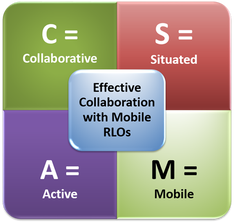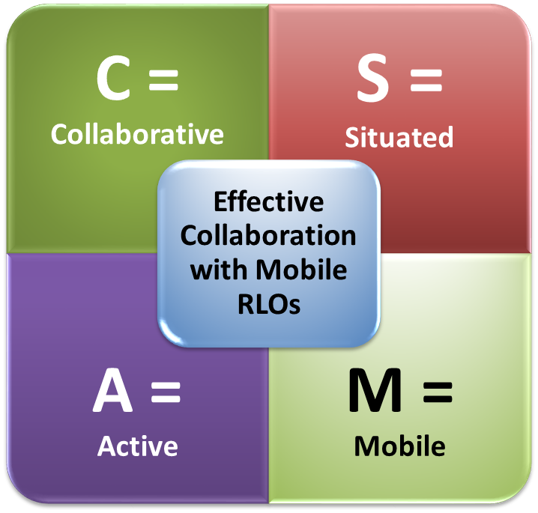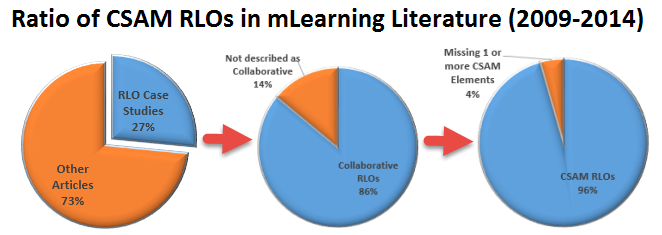The CSAM FrameworkThis space has been created to provide an overview of the Collaborative Situated Active Mobile (CSAM) learning design framework, and the work that I am doing with CSAM (including my doctoral dissertation research in the Doctor of Education in Distance Education program with the Center for Distance Education at Athabasca University, Canada).
|
What is CSAM?
- CSAM stands for Collaborative Situated Active Mobile learning design strategies.
- CSAM is a distillation of the key pedagogical elements guiding the instructional designs of case studies of the use of mobile RLOs to facilitate collaborative learner interaction.
The following table from Power (2013) summarizes the use of CSAM for reflective practice:
Using CSAM to critically analyze mLearning resources
Download the template below (.xlsx format) to access a tool that can be used to guide critical reflection on the pedagogical design of mobile learning resources.
Download the template below (.xlsx format) to access a tool that can be used to guide critical reflection on the pedagogical design of mobile learning resources.
| csam_template.xlsx |
Why was CSAM developed?
The aim of CSAM is to provide a foundation for, and reflective practice when making decisions about when and how to use mobile RLOs to facilitate or enhance collaborative learning. Rather than focusing on mobile technology, CSAM places the focus on pedagogical decision making.
CSAM in the Literature
CSAM learning design is represented in approximately one fifth of all chapters and articles analyzed in a meta-analysis of mobile learning publications between 2009-2014. The CSAM pedagogical components were represented in 86% of the chapters and articles that were about mobile RLOs, or that included mobile RLOs as supporting examples. Of the mobile RLOs that were described as supporting collaborative learning, 96% integrated all four CSAM pedagogical elements.
CSAM and Learning Theory
The development of the CSAM learning strategies framework has been influenced by Koole's (2009) Framework for the Rational Analysis of Mobile Education (FRAME) model. Like FRAME, CSAM is congruent with:
- Transcactional Distance Theory
- Activity Theory and the Zone of Proximal Development
CSAM Poster from Robert Power
Supporting Models and Frameworks
CSAM is also congruent with:
CSAM and Teacher Professional Development
This course was originally developed for a research study to investigate the impact of the CSAM learning design framework on teachers' perceptions of comfort, confidence, and interest in integrating mobile RLOs into their teaching practice. You can learn more about how we did that from our paper presented at the 13th World Conference on Mobile and Contextual Learning (mLearn 2014) in Istanbul, Turkey (November 3-5, 2014). You can also check out the slides from our presentation at mLearn 2014:
 The works and resources posted to this site are licensed under a Creative Commons Attribution-ShareAlike 4.0 International License. |
|



